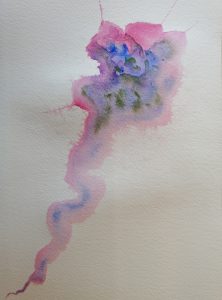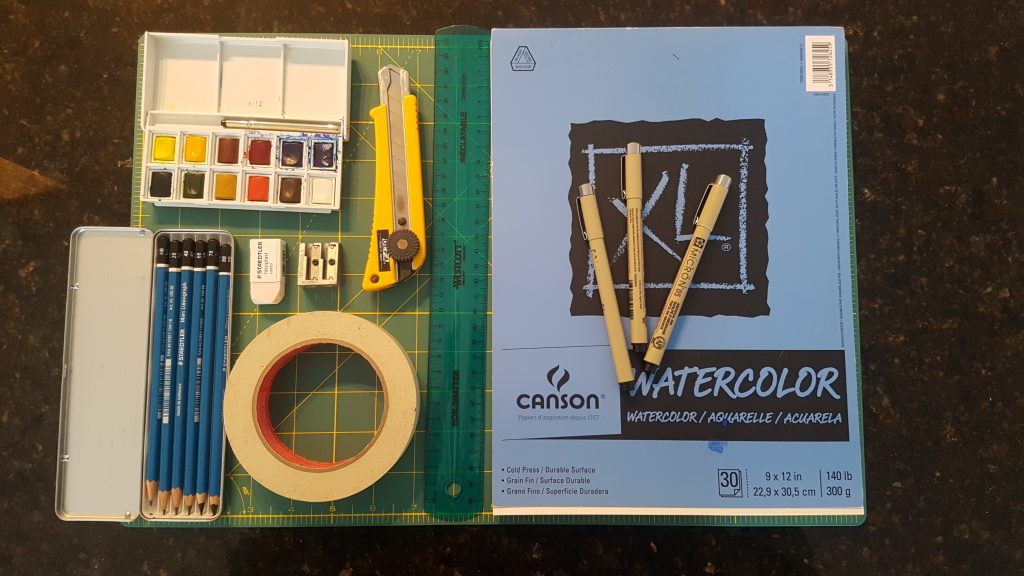After one of our art classes, I was lucky enough to receive a watercolour tutorial session from a fellow teacher candidate who is a very talented artist.

We practiced a variety of techniques:
- Wet on wet — paper is lightly covered in a thin layer of water (we used a spray bottle) and then wet paint is applied over top. The resulting effect is a paint that spreads upon contact with the wet paper and blurs at the edges. You can see a good example of this in the top left quadrant of my experimentation
- Wet on dry — in this technique, we are applying wet paint to a dry paper. The effect is a paint with a distinct, non-blurry line. We can see this clearly in the top left portion of the top left quadrant as well as in the bottom right quadrant.
- Blowing — this is a really fun technique that can have a really neat look. This is were you put wet paint on paper and then blow it to have the paint spray out on the page in multiple directions. You can see this in the lower left quadrant. I also used it in the lower right and then painted in between the splaying lines.
My colleague then got us to think about an emotion or feeling that we were experiencing. I was asked to think about which colour(s) would best represent this and then translate this onto the page. At that moment I was feeling very scattered. I have so many concepts floating around in my mind and felt like I am struggling to connect them all in a way that allows me to feel confident in my understanding. The cloud like formation at the top of the image below represents the concepts in my mind, and the thin bridge to the bottom of the page represents how much of that I feel that I have understood.

Next blog post, I will be starting on my book!


